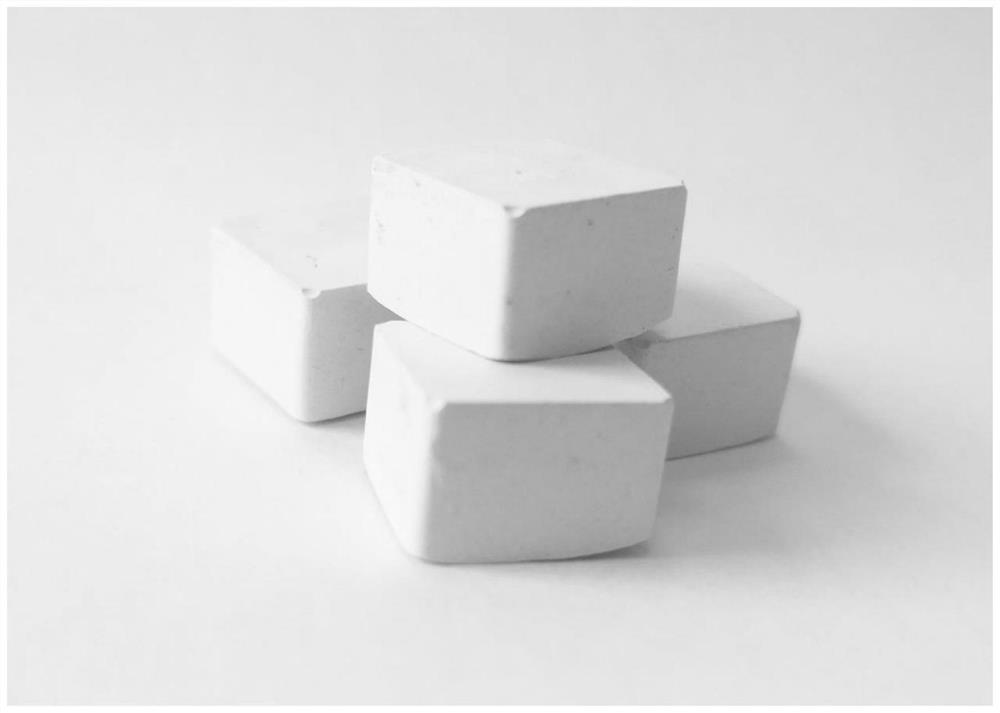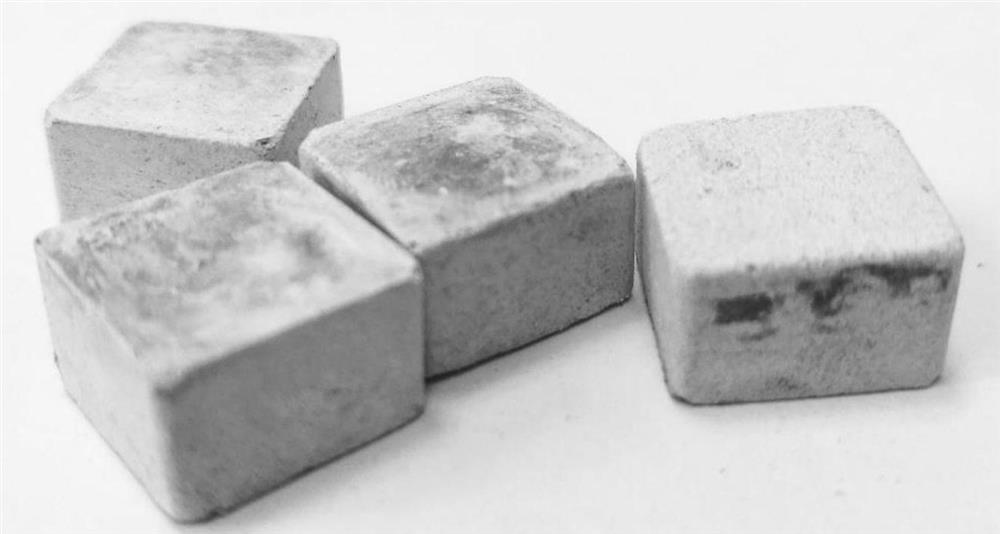Ardealite-based composite phase change energy storage material and preparation method thereof
A phase-change energy storage material and a composite phase-change technology, which are applied in the field of phosphogypsum-based composite phase-change energy storage materials and their preparation, can solve the problems of leakage, low thermal conductivity of materials, etc., and achieve low cost and simple and easy production process. , the effect of easy large-scale production
- Summary
- Abstract
- Description
- Claims
- Application Information
AI Technical Summary
Problems solved by technology
Method used
Image
Examples
Embodiment 1
[0045] After uniformly mixing 33.3wt% hemihydrate phosphogypsum powder with 66.6wt% water, continue to pass air into the phosphogypsum fluid to disturb the fluid at a flow rate of 0.03L / min, pour it into the mold after slightly disturbing for 1min, and place- Freeze at 10°C for 12h. Then place it in a vacuum oven at -2.5Mpa and dry at 80°C to constant weight to obtain a porous phosphogypsum material.
[0046] Fully melt the polyethylene glycol phase-change energy storage material at 70°C, put the porous phosphogypsum material prepared above into the melted polyethylene glycol, and soak it in a vacuum environment of -2.5Mpa for 2 to 5 hours to make the polyethylene glycol The diol fully fills the pores in the porous phosphogypsum to obtain the phosphogypsum-based composite phase change energy storage material. The relevant structure and performance parameters are shown in Table 1.
Embodiment 2
[0048] After mixing 20wt% hemihydrate phosphogypsum powder with 80wt% water evenly, continuously pass air disturbance fluid into the phosphogypsum fluid at a flow rate of 0.03L / min, pour it into the mold after slight disturbance for 1min, and place it at -10°C Freeze for 12 hours. Then place it in a vacuum oven at -2.5Mpa and dry at 80°C to constant weight to obtain a porous phosphogypsum material.
[0049] Fully melt the polyethylene glycol phase-change energy storage material at 70°C, put the porous phosphogypsum material prepared above into the melted polyethylene glycol, and soak it in a vacuum environment of -2.5Mpa for 2 to 5 hours to make the polyethylene glycol The diol fully fills the pores in the porous phosphogypsum to obtain the phosphogypsum-based composite phase change energy storage material. The relevant structure and performance parameters are shown in Table 1.
Embodiment 3
[0051] After mixing 20wt% hemihydrate phosphogypsum powder with 80wt% water evenly, continuously pass air disturbance fluid into the phosphogypsum fluid at a flow rate of 0.03L / min, pour it into the mold after slight disturbance for 11min, and place it at -10°C Freeze for 12 hours. Then place it in a vacuum oven at -2.5Mpa and dry at 80°C to constant weight to obtain a porous phosphogypsum material.
[0052] Fully melt the polyethylene glycol phase-change energy storage material at 70°C, put the porous phosphogypsum material prepared above into the melted polyethylene glycol, and soak it in a vacuum environment of -2.5Mpa for 2 to 5 hours to make the polyethylene glycol The diol fully fills the pores in the porous phosphogypsum to obtain the phosphogypsum-based composite phase change energy storage material. The relevant structure and performance parameters are shown in Table 1.
PUM
| Property | Measurement | Unit |
|---|---|---|
| density | aaaaa | aaaaa |
| melting point | aaaaa | aaaaa |
| thermal conductivity | aaaaa | aaaaa |
Abstract
Description
Claims
Application Information
 Login to View More
Login to View More - R&D
- Intellectual Property
- Life Sciences
- Materials
- Tech Scout
- Unparalleled Data Quality
- Higher Quality Content
- 60% Fewer Hallucinations
Browse by: Latest US Patents, China's latest patents, Technical Efficacy Thesaurus, Application Domain, Technology Topic, Popular Technical Reports.
© 2025 PatSnap. All rights reserved.Legal|Privacy policy|Modern Slavery Act Transparency Statement|Sitemap|About US| Contact US: help@patsnap.com



